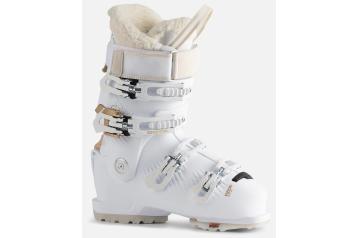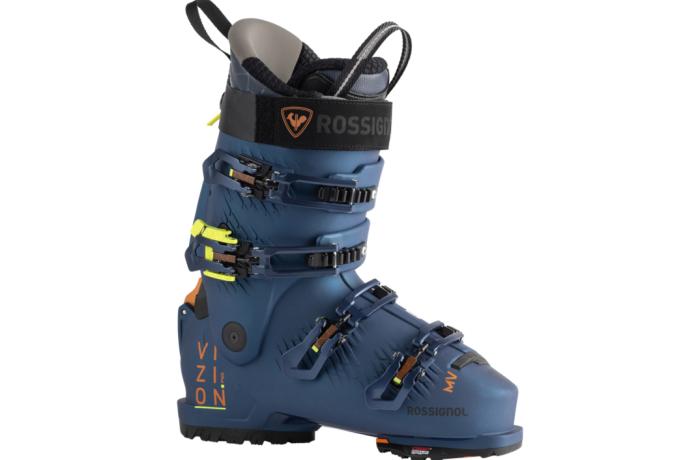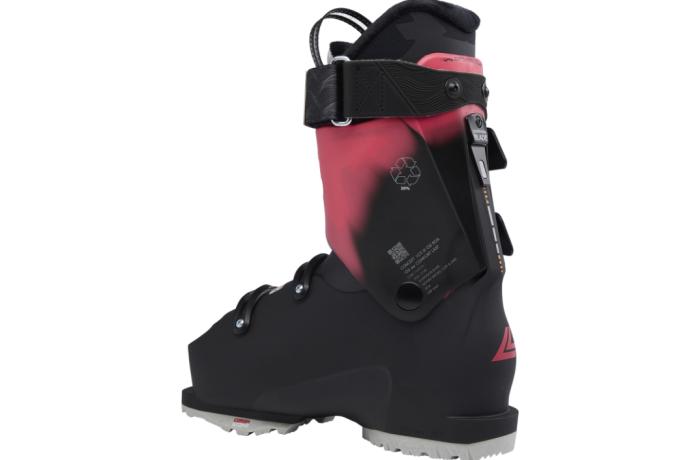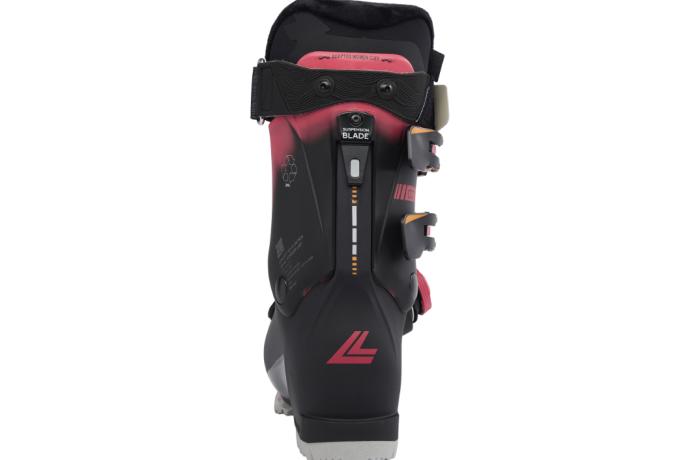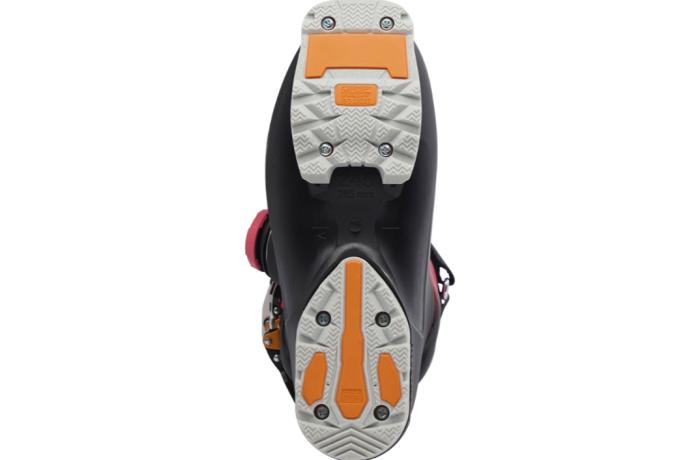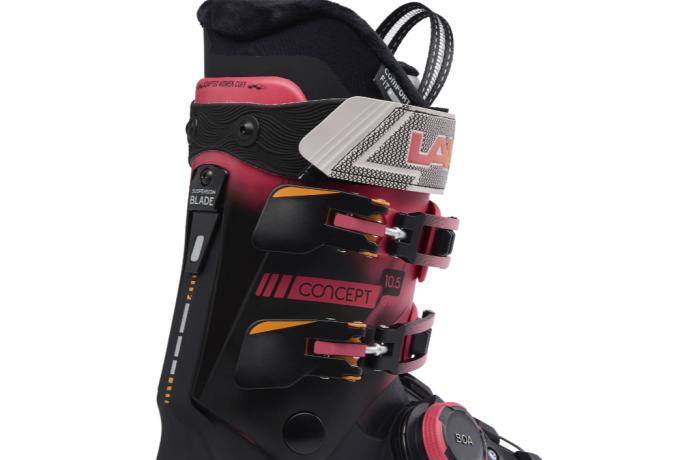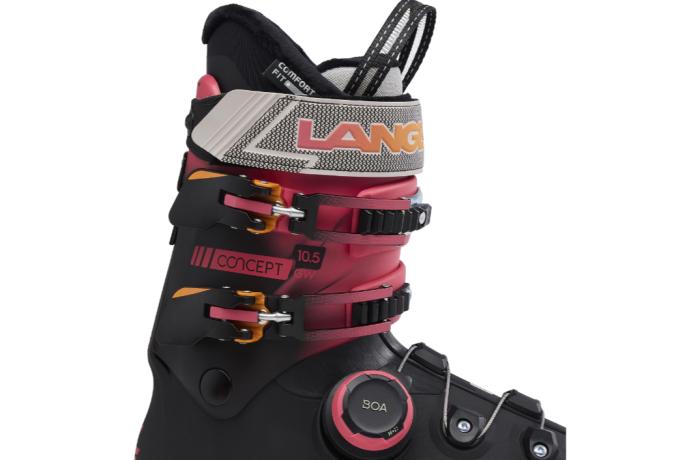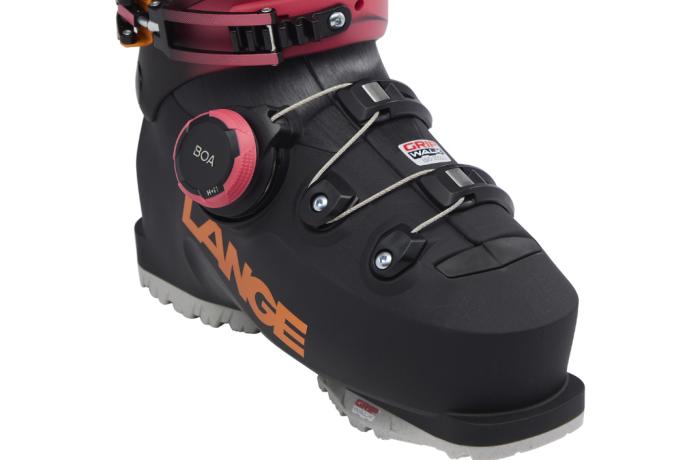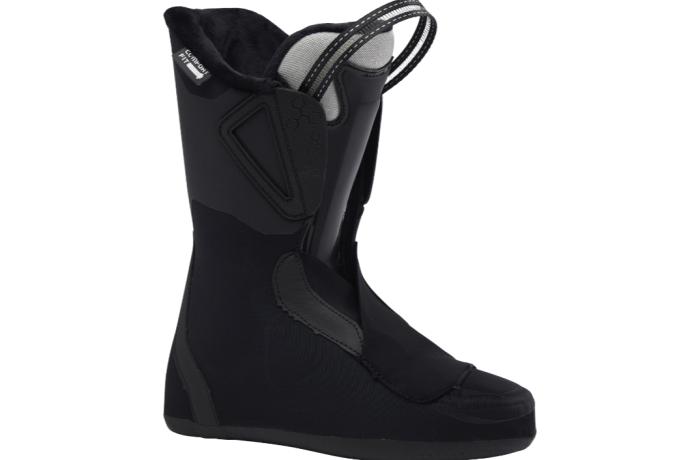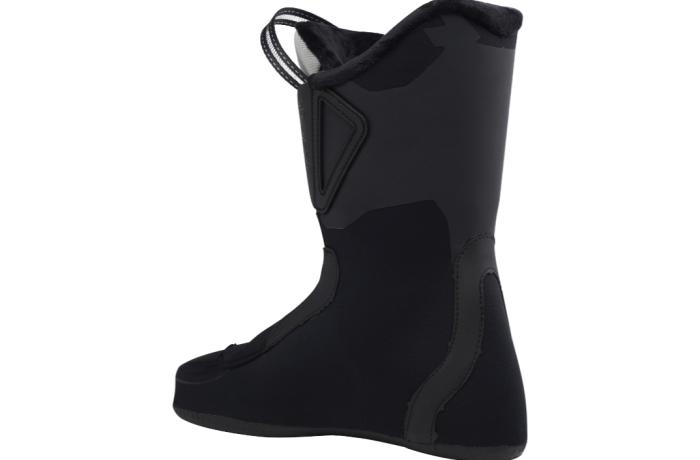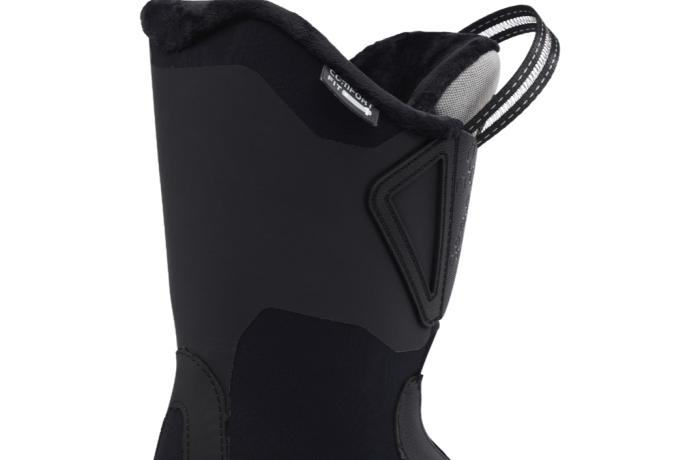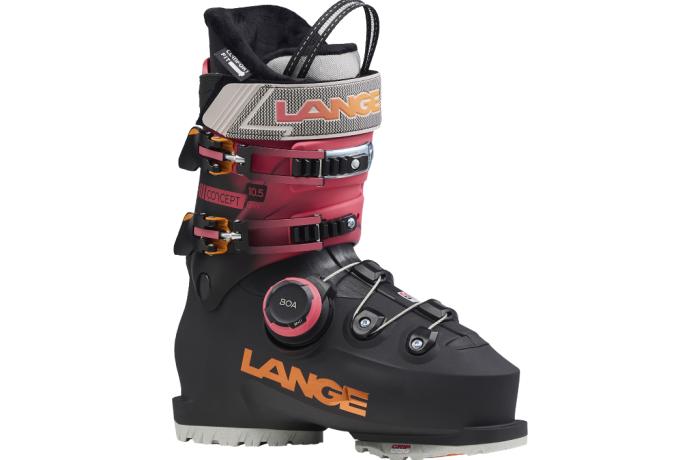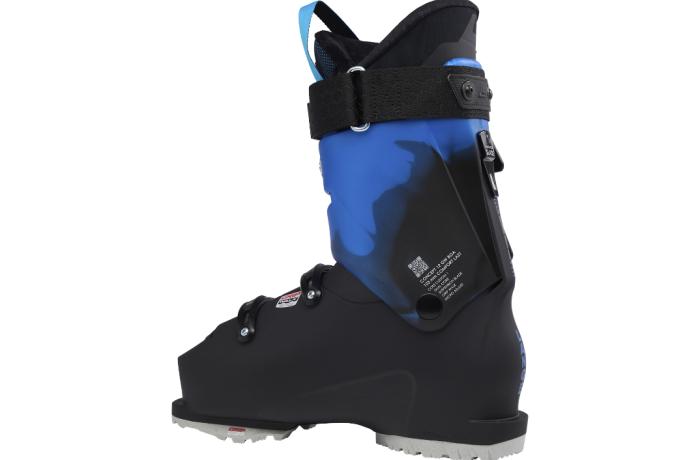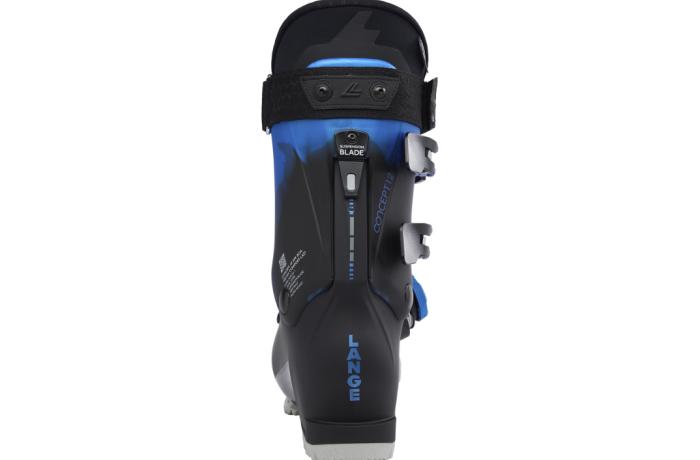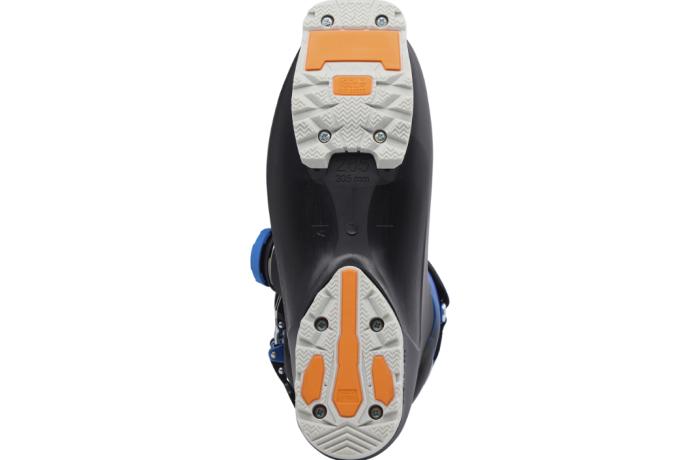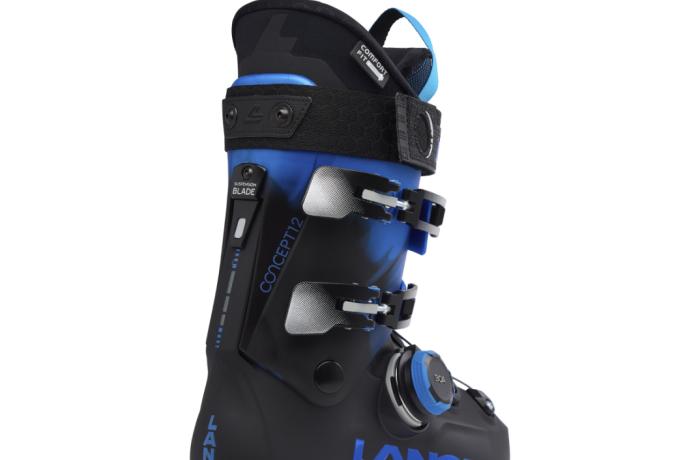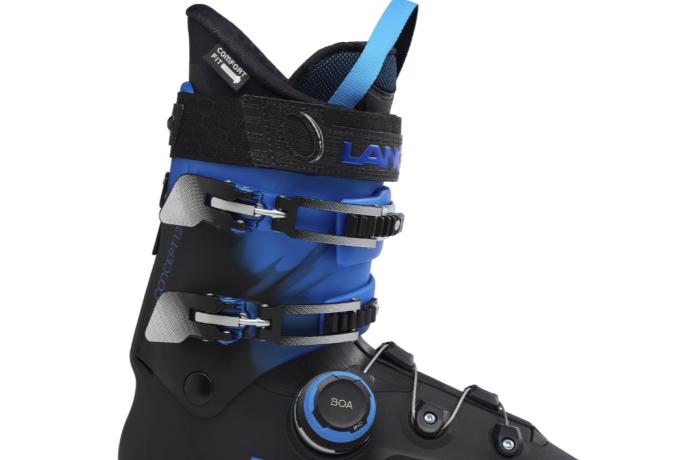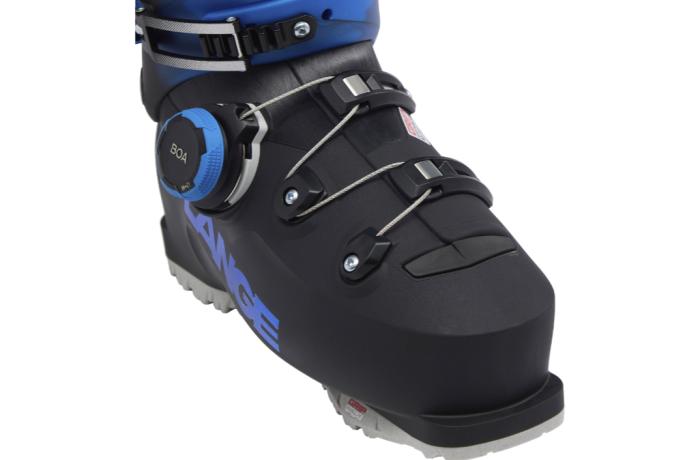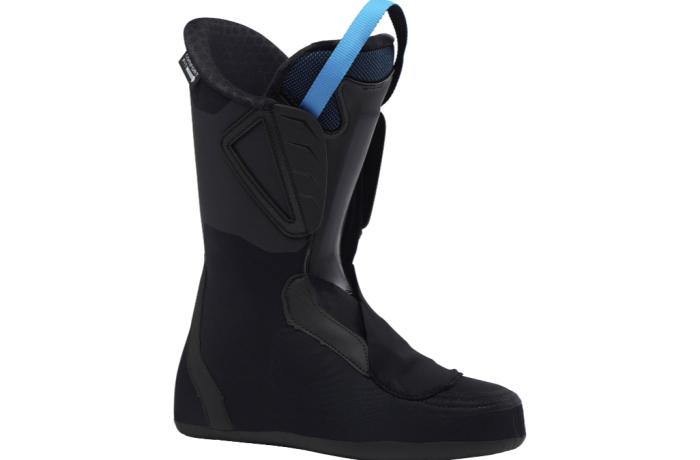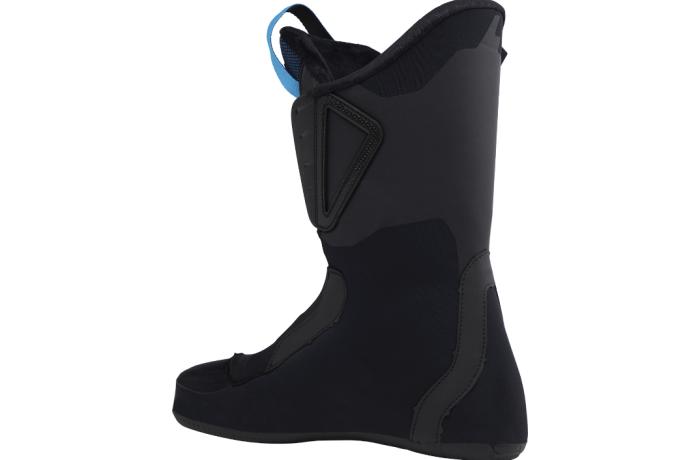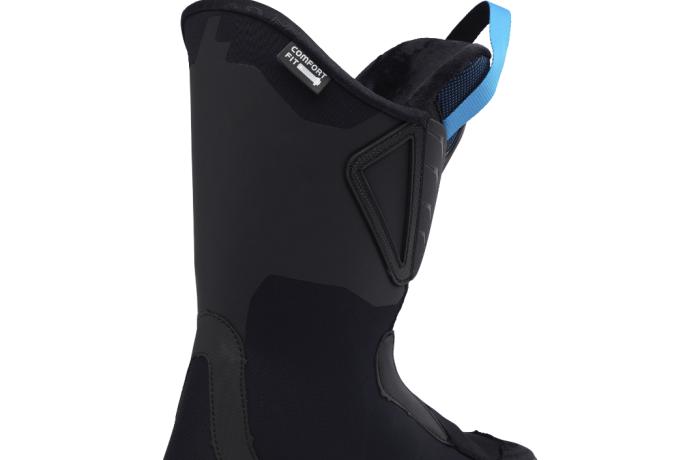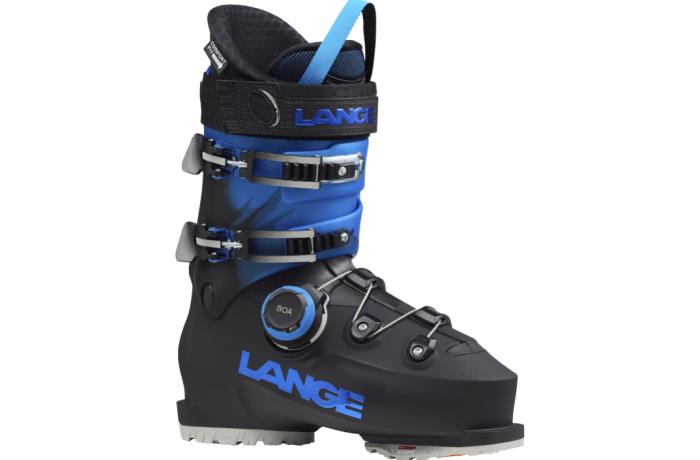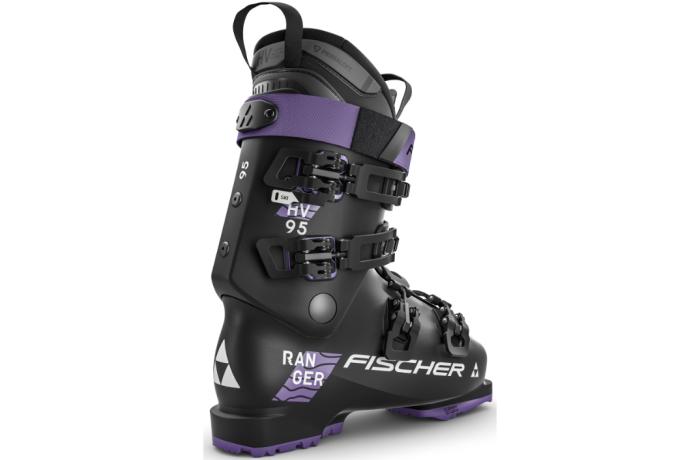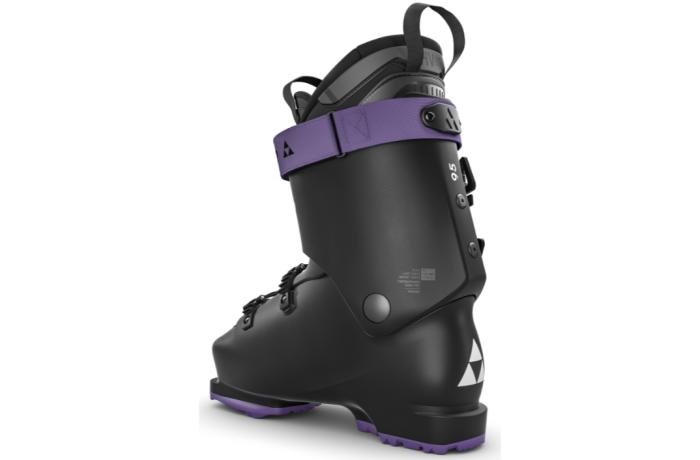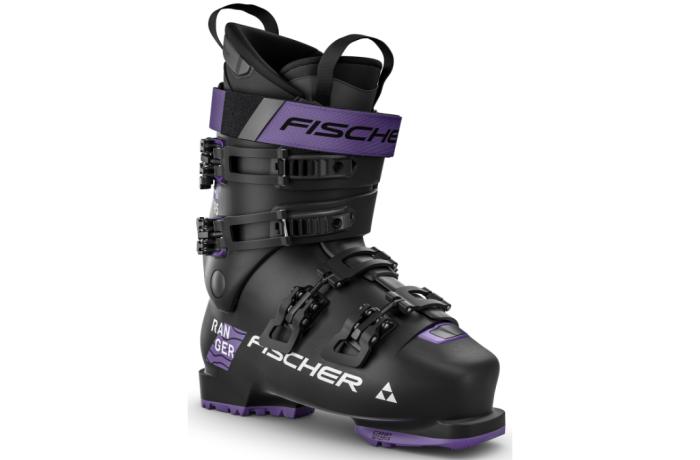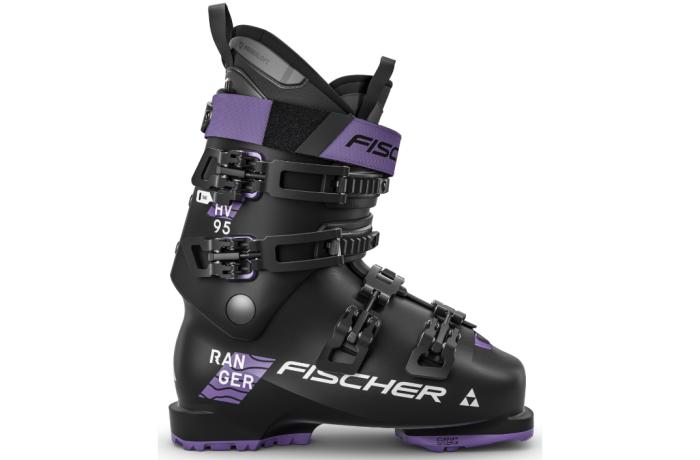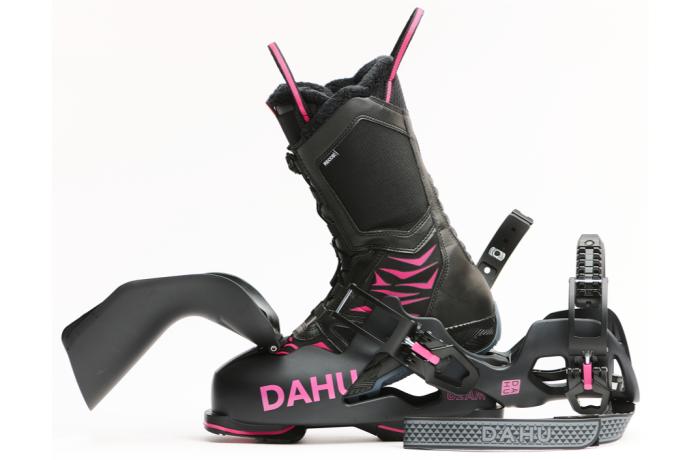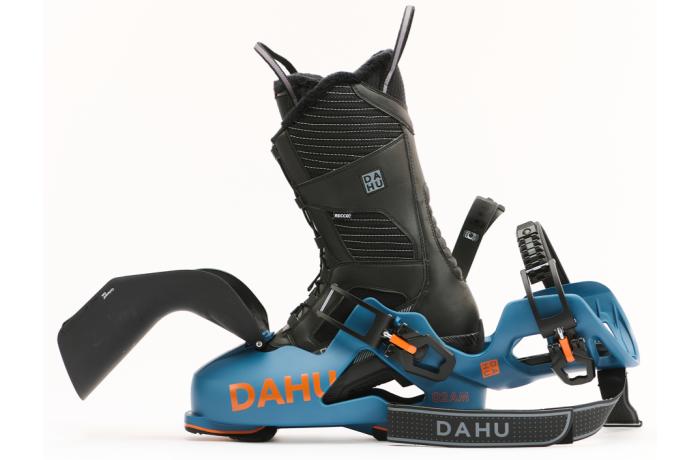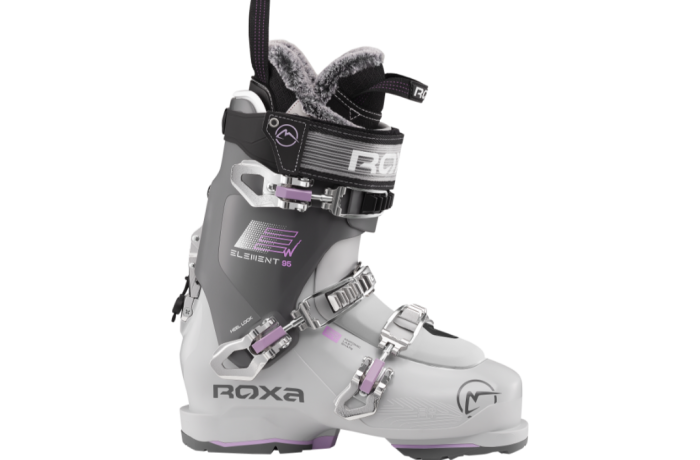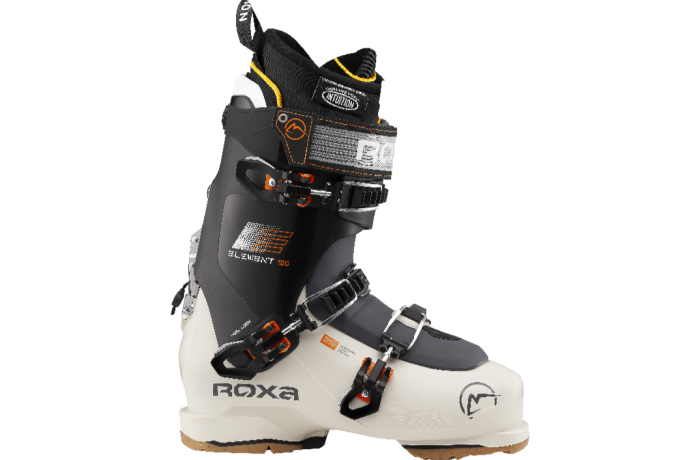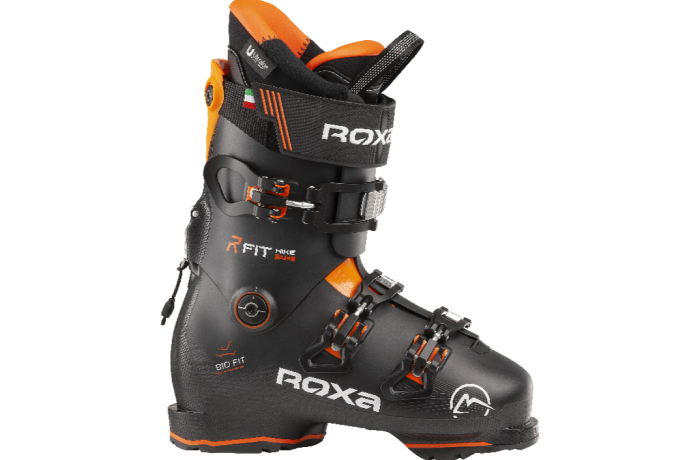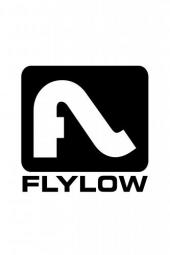Smooth encapsulation of the foot. Good fit tension around the entire foot. Contours to all aspects of the foot. These were three different testers’ takes on the fit of the medium width Rossignol Vizion Pro 120—essentially they’re saying, it fits great! A closer look at the aggregate fit data bears this out, showing that out of eight fit zone scores (toebox, forefoot, lateral column, navicular, instep, heel, ankles, calf) the Vizion Pro 120 scored a 2.95. The ideal medium-width fit score is a 3.0, so both the numbers and the words match here—an ideally fitting medium width boot. Some testers went so far as to claim that its evenly anatomical fit and well-cushioned feel against the foot and leg were a benchmark standard for the all-day comfortable fit that most skiers are seeking.
Has a nice predictable feel on snow. Skis as well or better than non-walk-mode boots. A very good overall performer. Now, these were another three testers’ reports on the Vizion Pro 120’s skiing performance, which need no further explanation. Testers said there were no gaps in this boot’s descent resume, and pointed out that it controlled carving skis on hard snow at high speed and powered fat skis through chopped crud in tight trees with equal ease.
Getting excited about how a medium width Rossignol all-mountain boot fits and skis should be no surprise to anyone who’s rocked a Hi-Speed Pro or Allspeed Pro before that, but the two paragraphs above have purposefully buried the lead here, which is that the Vizion boot is currently the easiest boot to put on or take off on the face of the planet (ahem, that actually fits and skis like a real boot). That last caveat, in italics, is important. There are some very easy-to-put-on boots out there, but they may be too wide, they may be too soft, they may be rear entry designs. Only the Vizion range offers a feature that transforms the boot cuff into a foot-gobbling-mega-maw via the flip of a different-colored cuff buckle. The Vizion offers this for men and for women, in narrows, mediums or wides, in a four-buckle overlap design and in a variety of stiffnesses to suit experts to intermediates.
The reason we flipped the script and talked about fit and performance first is because our testers say, at essence, the Vizion is a great all-mountain boot for purely those reasons. That it’s also the easiest boot to get on and off is a separate thing. For some skiers this feature is an added bonus they may never utilize, but for others it is the only way they can continue skiing and skiing well--that there’s a boot to enable it is pretty cool, we think.
